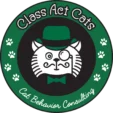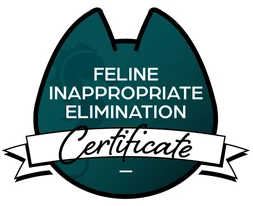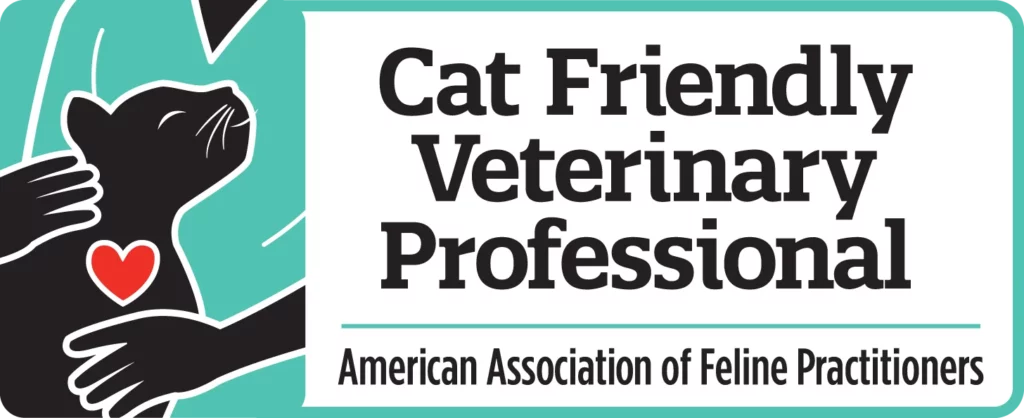For those of you who are new to my blog, I want to introduce you to Class Act Cats’ Chief Catnip Officer. Meet Poutine.
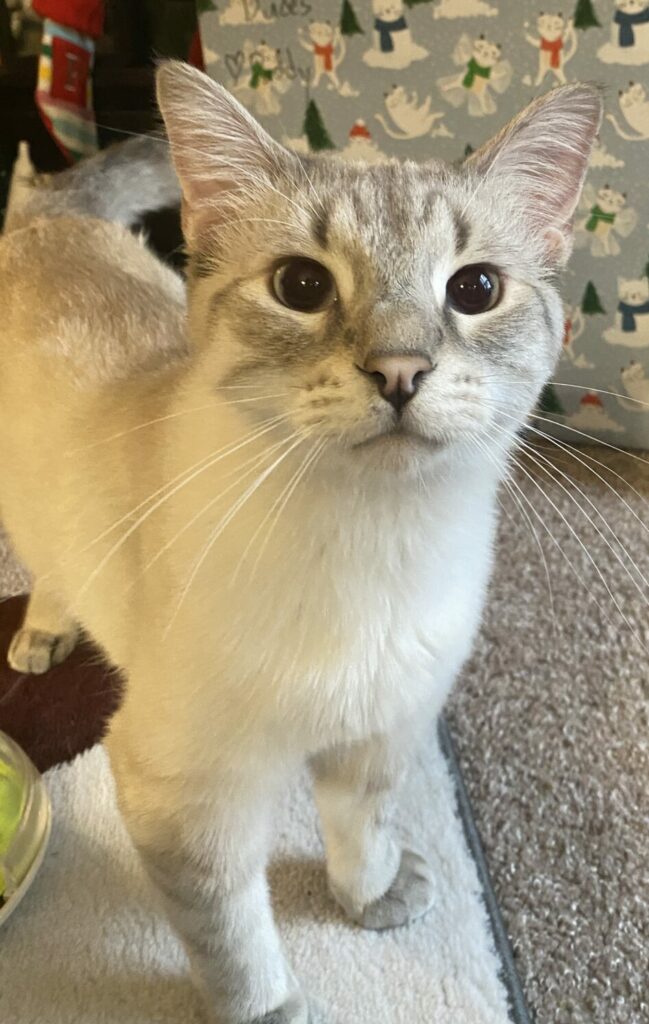
Poutine is a very sweet, playful cat who I adopted through Twin Cities Pet Rescue at the Cafe Meow New Hope. Like any cat, he is susceptible to illness and at his initial vet visit, his veterinarian suspects he has a mild case of feline asthma.
Update: Turns out it was a respiratory infection that wouldn’t go away, not asthma.
While feline asthma can be treated successfully by your veterinarian, it may involve getting your cat to use an inhaler. This can seem daunting and it can be quite the challenge for some cats! However, with some preparation getting a cat to use an inhaler isn’t as tough as it seems. I’m currently working through getting Poutine used to an inhaler for when he needs it so I figure I’d share the process we’re using.
Important Disclaimer
Before we begin, please remember that this blog is not a substitute for veterinary advice. I’m a certified cat behavior consultant and not a veterinarian so my focus is on the behavior of getting your cat to use the inhaler, not anything related to the treatment of your kitty’s asthma. Your vet can provide you with specific instructions on how to administer the medication and actually use the inhaler. This blog is focused on the training to get your cat used to the inhaler.
I am also writing this from the perspective that you have time to get your cat used to an inhaler. For example, if your cat is on an oral medication currently or your veterinarian is monitoring before initiating treatment. If your cat needs to use their inhaler quicker, you may need to modify the speed at which you go. Always listen to your veterinarian and ask for specific recommendations from them.
Lastly, and I hope this is obvious, but if your cat is having any trouble breathing, your cat needs to be evaluated by an emergency veterinarian right away.
Getting Your Cat Used To Something Going Over Their Nose
The first part of cat inhaler training is getting your cat used to the mask of the inhaler being on their nose. I suggest getting an inhaler as soon as your vet suspects that your cat may need it so you can begin getting them used to it. There’s no real downside to training your cat to use an inhaler even if they don’t need it right away as you never know if they may need it in the future. While your vet may have specific recommendations, I have an AeroKat inhaler and really like it.
Besides the inhaler, other supplies you’ll need include:
- Treats or food your cat really likes. Ideally, you’d have some sort of tuna juice or a lickable treat like Churu or Catit lickable treats.
- A small syringe
- A few clean plastic nursery pots with drainage holes in various sizes including at least one 2 inch pot. Nursery pots are the thin plastic pots you may purchase a small plant in. You might be able to use another type of pot, but nursery pots are easy to modify if needed.
- Optional: A clicker if you want to use clicker training to help your cat with this process. I recommend a clicker ring like the Clicino Clicker Ring as it frees up a hand so you can use both hands for the training.
No, we’re not going to be growing plants for your cat. The nursery pots are going to be the starting point for getting your cat comfortable sticking their face into something using a gradual process.
Use The Biggest Flower Pots First
To start, you’ll want to teach your cat to stick their face into the biggest flower pot first. If you can find a nursery pot that’s at least 6 inches, that’s great as it will be less restricting for your cat. It’s important you don’t just try shoving your cat’s face into the pot as that may scare them. Rather, start with the pot being held in your hand and give them a treat near it. I suggest using the syringe to do this part so your cat already knows the syringe is how they get treats or tuna juice.
You can get the cat used to sticking their face into it via a few methods. This is where the clean part and the plastic nursery pot portion comes in useful. Starting with your largest pot, you can use the syringe to slowly feed your cat a bit of lickable treat by sticking it through a drainage hole in the bottom of the pot or cut a small hole to fit the syringe through. If needed, add just a bit of water to the lickable treat so it can be easily drawn up into the syringe. Don’t squirt the whole thing into their mouth all at once. Rather, gradually give them a bit of the treat.
Start with the syringe as far forward in the pot as you can so your cat doesn’t have to stick their face in that far. Give your cat a small squirt of the tasty treat and remove the syringe. Repeat so they can stick their face into the pot again and repeatedly see that it isn’t scary over multiple, short sessions. As you do this multiple times, you can move it further back into the pot so your cat has to stick their face in further and further.
If your cat isn’t sticking their face in, you can also try putting a dab of lickable treat in the bottom of the pot and have them lick it off. Start from the inner rim of the pot and gradually move it inward as your cat gets used to it. Remember to wash your nursery pots after each use if you use this method. Similarly, if you are using dry treats, you can stick on on the lip of the pot and gradually set it further and further in. Go slowly for best results.
The end result you are looking for is your cat willingly sticking their face into the pot without hesitating or displaying signs of fear. That’s why you want to let your cat choose to stick their face in, not shove the pot over their face or head. That will definitely create more work for you!
After your cat is used to to the pot, you can move on to the next smallest size down. Repeat the same process decreasing one step down with nursery pots until you get to the 2 inch pot. You can cut holes in the bottom of the pots if needed. Your end goal for this portion is that your cat will fully stick their face into the 2 inch pot so the lip rests around their muzzle.
Using Clicker Training
If you are familiar with clicker training, it can be used as part of inhaler training cats by training them to stick their face into the pot voluntarily. You just click whenever they move their face in the direction of the opening of the pot. After they’re doing that reliably, you change the criteria to get a click to them sticking their face further into the pot.
While you can use any type of clicker, I use Clicino Clicker Rings and find them to make this so much easier. You’ll need to hold the pot, clicker, and treats so it frees up a hand and they are quieter than many other clickers so will be less likely to spook your cat.
Switch To The Mask
Once your cat is used to the mask, you can switch to using the mask itself. As most masks are silicone or a washable material, if they get lickable treat or tuna juice on them, no big deal. You can just wash it off after so you will be repeating the same method as above using only the mask without the spacer (the large cylindrical chamber) attached.
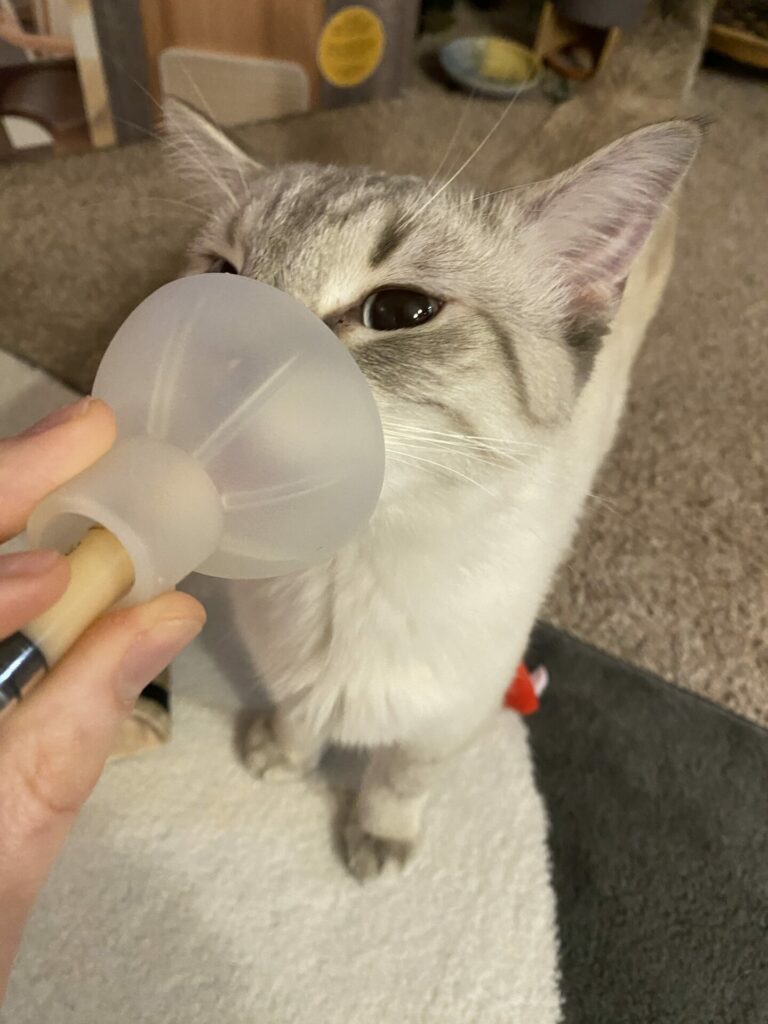
If your cat finds the switch from pot to mask challenging, you can start out sticking the smallest pot into the mask at first. This may help them make the connection that the mask and the pot look different, but if they do the same thing (stick their face in) they get a tasty reward. You can also try cutting the bottom off the plastic nursery pot and stick part of it into the mask for a more gradual transition.
Once again, your goal is to get your cat used to the mask being on their face with the lip of the mask up against to their face.
Add Time And The Spacer
At first, you just want your cat sticking their face into the inhaler mask. Once your cat is reliably sticking their face in the mask, you can gradually start increasing the time they need to hold their face into it by slowly giving them tuna juice or a treat with the syringe for longer and longer. Make sure they also get a reward after the spacer is removed at this point as it becomes important for the next step.
Once your cat can hold their face in just the mask for at least a few seconds, you can add the spacer. Attaching the spacer to the mask will make it so you really can’t stick the syringe in through the mask so you’ll want to reward your cat with a treat after they pull their face out. If your cat doesn’t put their face in with the spacer attached at first, begin by just holding the spacer nearby then attach it to the mask next.
You may need to reduce the time your cat holds their face in the mask a bit as having the spacer attached could confuse them a little. If this is the case, just work your way back up with time they hold their face in. The cat should gradually get a reward only if they hold their face in for a certain amount of time. Don’t push them too hard by going too fast!
Get Them Used To The Sound Of The Inhaler
As the inhaler will be used to give your cat a puff of a medication, the next step of cat inhaler training is getting them used to the sound of the medication being aerosolized into the spacer chamber. The medication will likely come in a device that looks similar to this.
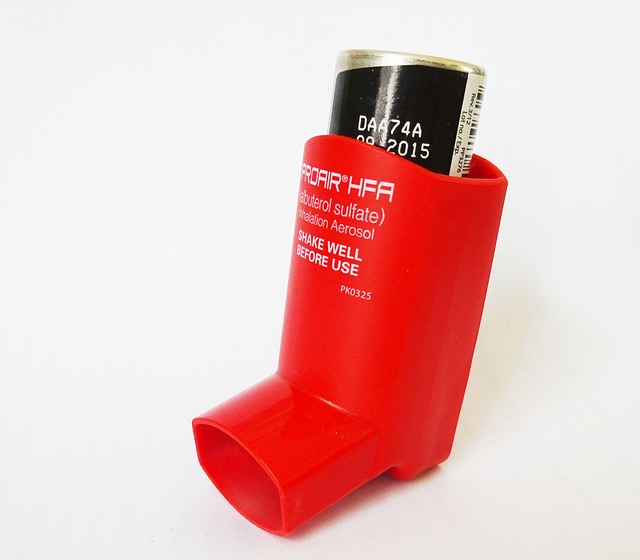
It would be expensive to use the actual medication for this part, but thankfully there’s a way to create a similar sound: a compressed air canister.
No, you won’t be spraying it toward your cat. In fact, it’s very important you don’t do it as we want your cat to get used to the sudden burst of sound without becoming afraid. Start out giving a short burst of the air canister at a distance so it’s very quiet. Your cat should get a treat after so the sound of the air canister becomes a signal that a treat is coming.
Similar to the method used to gradually increase the amount of time your cat has their sweet face in the mask, you should should gradually decrease the distance between your cat and the air canister. Your cat should never be startled by the air canister going off. Work your way toward the air canister being set off near the inhaler itself, but use caution as you don’t want the cat to become afraid of the inhaler due to the air canister spooking them.
After this step, your cat inhaler training is almost complete. You’ll just need to get your cat used to the inhaler for as long as your vet instructs you they need to hold it so they can get the full dose of the medication.
Cat Inhaler Training Problems
Of course, inhaler training cats doesn’t always go exactly as planned. In some cases, your cat may find part of the process challenging or you may get stuck. It’s understandably pretty scary to have your cat diagnosed with an illness that could be life threatening like asthma so you want everything to go well with the training. What do you do if your cat struggles or has trouble with parts of the process?
The next steps vary based on what where you’re finding trouble. If your cat doesn’t like the treats you’re offering, you may need to try another flavor or brand. If your cat is having trouble with the flower pots, you can also try cutting off the bottom of the pot to reduce how restricted they may feel. You can find another flower pot later that is intact to get them used to a slightly more restrictive pot that is similar to the actual mask.
If you are still struggling, your vet may have some suggestions or you can set up an Easy Cat Care consultation with Class Act Cats. These are short sessions designed to help with topics such as cat inhaler training, medicating cats, nail trims, and more.
